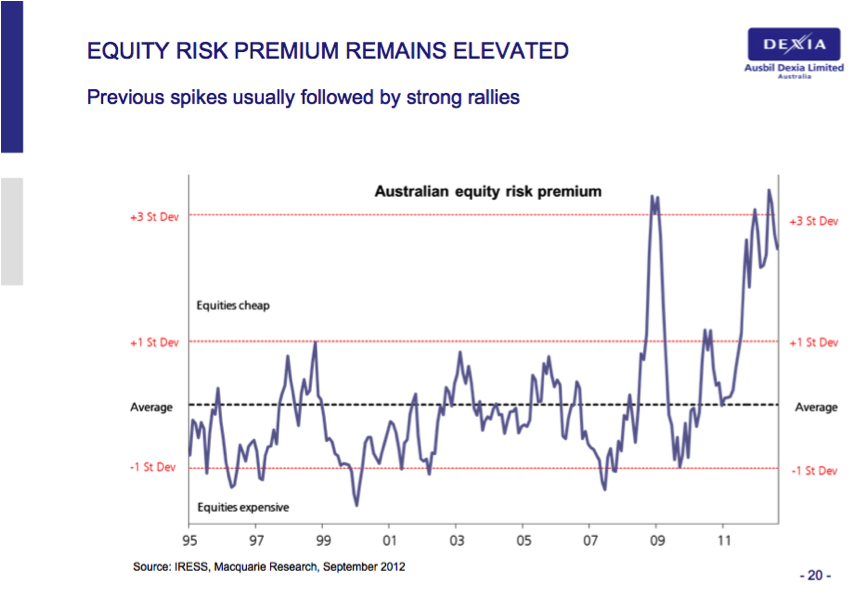What Is an Equity Risk Premium
Post on: 13 Август, 2015 No Comment

Article Details
- Written By: Malcolm Tatum
- Edited By: Bronwyn Harris
- Last Modified Date: 10 March 2015
These 10 animal facts will amaze you.
Adorable animal families that will make you aww.
These 10 facts about space will blow your mind.
An equity risk premium is the additional amount of return that is provided by a stock above and beyond the risk-free rate of return. This extra return helps to provide incentive for investors to participate in equity markets, in spite of the higher degree of risk in comparison with some other investment options. This same approach can also be applied to an entire market.
In order to understand how an equity risk premium functions, consider a stock that posts a twenty-percent return within a specified period of time. The investor purchased the shares based on projections that the stock was highly likely to generate a nine-percent return within that time period. That nine percent would be considered the risk-free rate, since indications were that the stock would at least provide that much of a return. The remaining eleven-percent would be considered the equity risk premium, accounting for the degree of performance that was above and beyond the amount of return considered to be more or less a sure thing.
Sometimes known simply as an equity premium, the underlying premise of the equity risk premium is that investors will take on additional risk, if the potential return is considered worthwhile. This phenomenon is sometimes referred to as the risk-return trade-off, since each investor must decide if the amount of return is worth the degree of risk that he or she must assume in order to have a chance to earn that return. As part of the assessment process, investors must look closely at the potential return, including the likelihood of market conditions converging to produce returns above and beyond what would be generated if market conditions remained relatively the same. If the chances of earning this additional return are relatively low, the investor may consider the risk too great. At the same time, if the possibility of earning that return is significant, the investor may be willing to assume the risk.
Due to the volatile nature of investment markets, the generation of an equity risk premium during one period does not necessarily mean the trend will continue. In order to maximize the value of an investment portfolio, it is essential to continually evaluate the status of stock prices and where they are most likely to move within a given period of time. It is very possible for one stock to generate an equity risk premium during one quarter, then fall back to a return that is closer to the risk-free rate during the next quarter. Investors must determine if that reduced return projected for the upcoming period is sufficient to hold onto the shares, possibly in hopes that it will once again provide additional returns, or to sell the shares and pursue a different opportunity.














